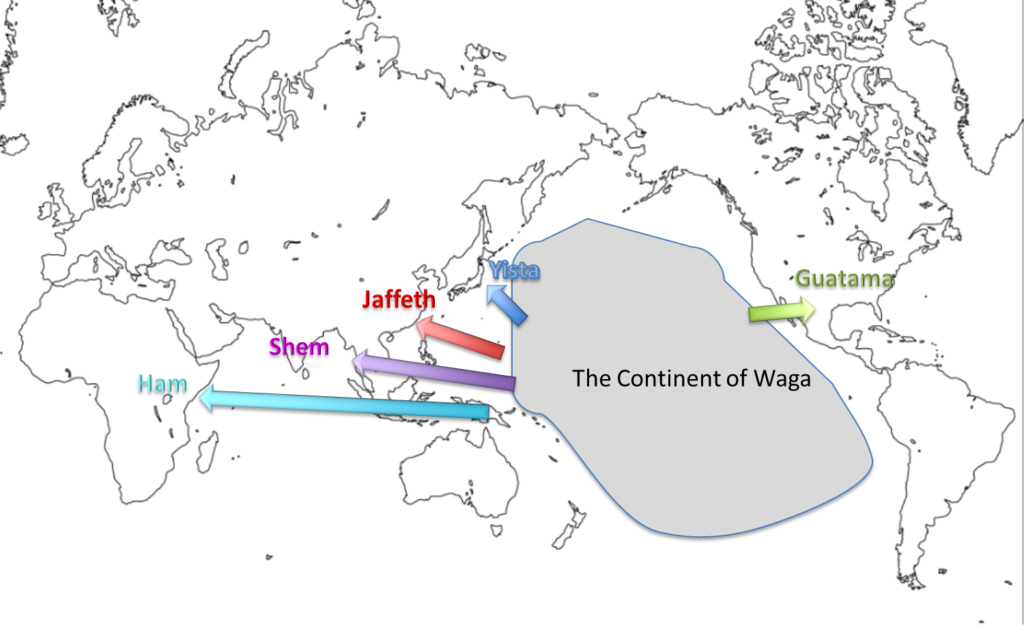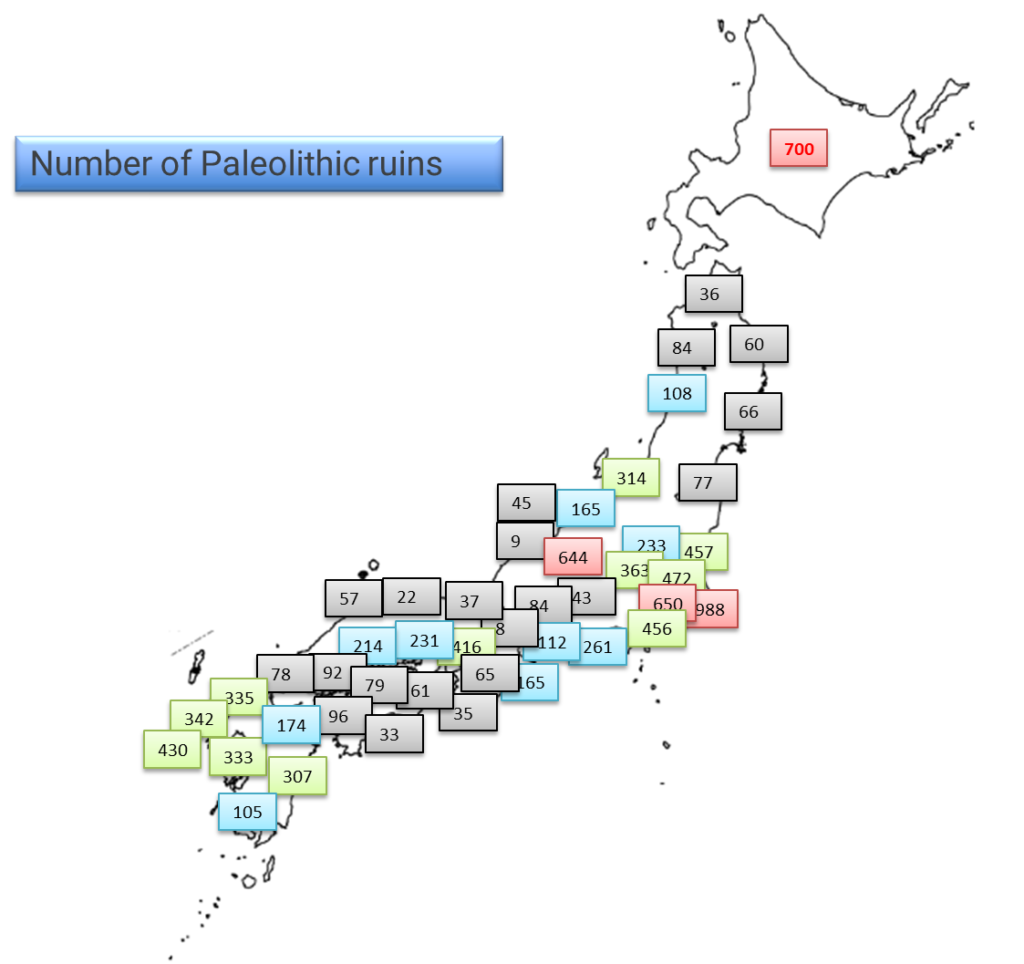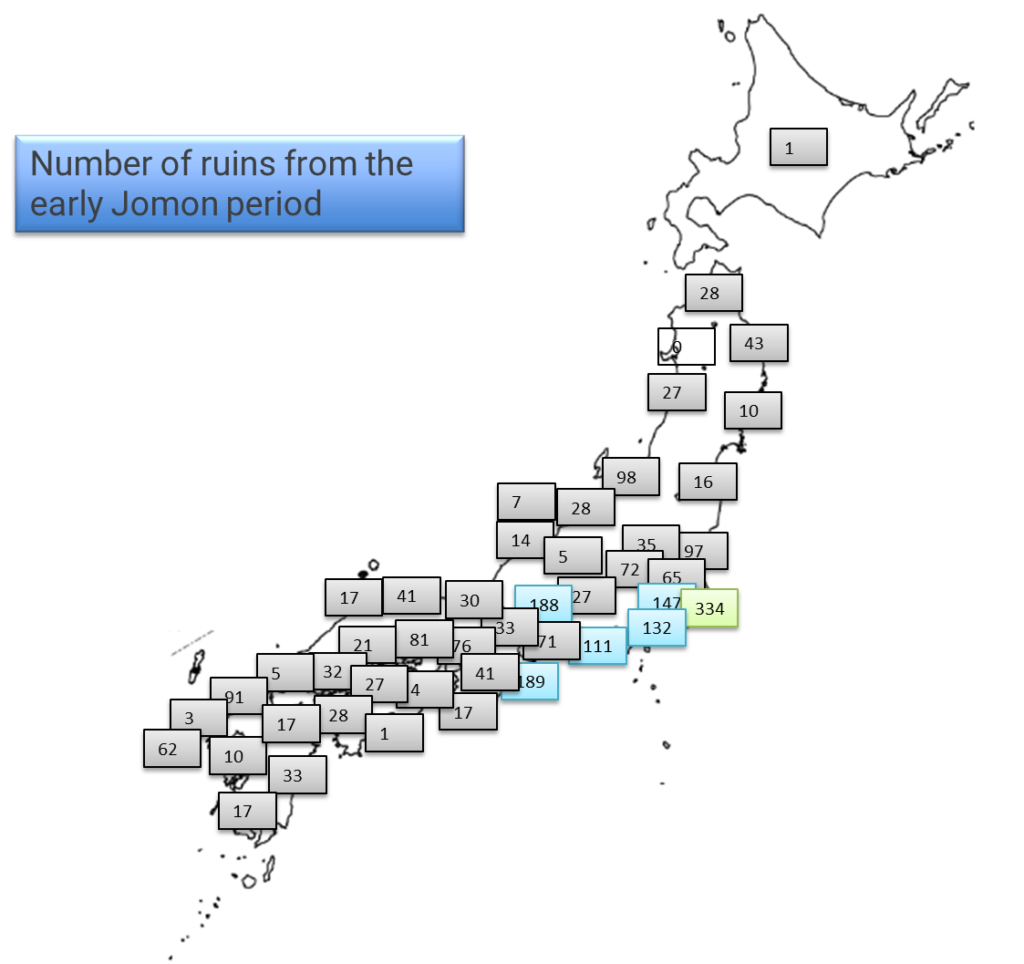After the Pan continent was submerged, where did I’hins go?
According to OAHSPE, about 24,000 years ago, the continent called “Waga” (also known as “Pan”) was submerged under water.
Once upon a time on earth there was a tribe of I’hins. However, as a result of human conflict, there were no remaining I’hins outside of the continent of Wagah (Pan).
A few I’hins people survived on the Wagah (Pan) continent.
(OAHSPE-10 “The Lords’ First Book” Chapter 1-25,32)
At this time, the chief god commanded the I’hins to build a ship.The I’hins, who were hiding in the mountains, built a ship. The I’hins, who were hiding in the valley, did the same.
It is said that 138 ships were built.
(OAHSPE-10 “The Lords’ First Book” Chapter 1-38,39)
Finally, on the day of the Flood, I’hins boarded the ship as told by the Lord. The ships built then floated on water even in valleys after the land was submerged by floods. The I’hins were able to survive the flood day by boat.
(OAHSPE-10 “The Lords’ First Book” Chapter 1-41,42)
The ship was divided into 34 boats each. However, if there are 4 groups of 34 boats, there will be 136 boats. There are still two boats left. These two boats were separated from this convoy midway through. The destination is north.
(OAHSPE-9 “Book of Aph, Son of Jehovih” Chapter 7-7,8)
Organize the information here.
- In “The Lords’ First Book”, it is said that the fleet was divided into four groups, which was given the names “Guatama”, “Jaffeth”, “Ham”, “Yista”.
“Yista” refers to later Japan.
(OAHSPE-10 “The Lords’ First Book” Chapter 1-55)
However, “Book of Aph” says that in addition to the four ships, the remaining two ships were separated from the rest of the fleet. It is said that he then headed north.
(OAHSPE-9 “Book of Aph, Son of Jehovih” Chapter 7-7,8)
In other words, only two ships left over from the four fleets landed in Japan. The fleet heading north did not land in Japan. If it refers to a fleet called ’Yista’, it would only refer to these two ships.
By the way, the land of Ista, where these two ships landed, was given the name Zha’Pan in the Waga language, which means “remnants of the continent of Pan.” The latter is Japan. - Of the 34 ships in the fleet, the one called “Jaffeth” landed in what is now China.
(OAHSPE-10 “The Lords’ First Book” Chapter 1-58) - The fleet that headed east was called “Guatama”. Although there is no current country name, there is no doubt that it was the Americas.
- The convoys heading southwest were called “Ham”. The country where this fleet landed was around present-day Egypt.
(OAHSPE-10 “The Lords’ First Book” Chapter 1-60) - The fleet heading south was called “Shem”. The country they landed in was present-day India (Vindyu).
(OAHSPE-10 “The Lords’ First Book” Chapter 1-59)
”Shem” was not named in the first fleet. From this we can infer that the fleet that landed at ”Shem” was initially sailing with two ships called “Yista”, but they got separated along the way.
It is believed that it landed in India.
To summarize, the results are as follows. After the submergence of the Waga(Pan) continent, the 138 ships initially sailed as the Ista fleet (36 boats), the “Jaffeth” fleet (34 boats), the “Guatama” fleet (34 boats), the “Ham” fleet (34 boats).
However, on the way, two ships of the “Yista” fleet became separated.
In the end, the following were landed:
2 ships in Japan
34 boats in India
34 ships in China
34 ships in America
34 ships in Africa

Japan 24,000 years ago
Japan was in the Paleolithic Age 24,000 years ago. Numerous ruins exist from Hokkaido in the north to Okinawa in the south.
The number of ruins is illustrated based on data included in ”Palaeolithic Sites in the Japanese Islands: A Database” published by ”Japanese Palaeolithic Research Association.”
Data: Japanese Palaeolithic Research Association “Database ‘Paleolithic Ruins of the Japanese Archipelago'”)
Above is the number of remains from the Paleolithic period.
Below is the number of ruins from the early Jomon period.


Legend: Gray: 1-99, Light blue: 100-299, Yellow-green: 300-499, Red: 500-
Reference: “Palaeolithic Sites in the Japanese Islands: A Database” published by Japanese Palaeolithic Research Association
In the Japanese archipelago, the number of Paleolithic ruins was concentrated in Kanto, Shinetsu, Tokai, and Kyushu. However, from the Paleolithic period to the Jomon period, the number of ruins decreased dramatically overall.
”OHASPE” says that the Japanese archipelago was part of the submerged Waga(Pan) continent. At that time, humans lived all over the Japanese archipelago, but if the Waga (Pan) continent was submerged 24,000 years ago, as recorded in ”OHASPE”, then Hokkaido, where almost no humans lived, large-scale disasters may have occurred in Tohoku (especially on the Sea of Japan side), the Chugoku region, and Kyushu.


コメント